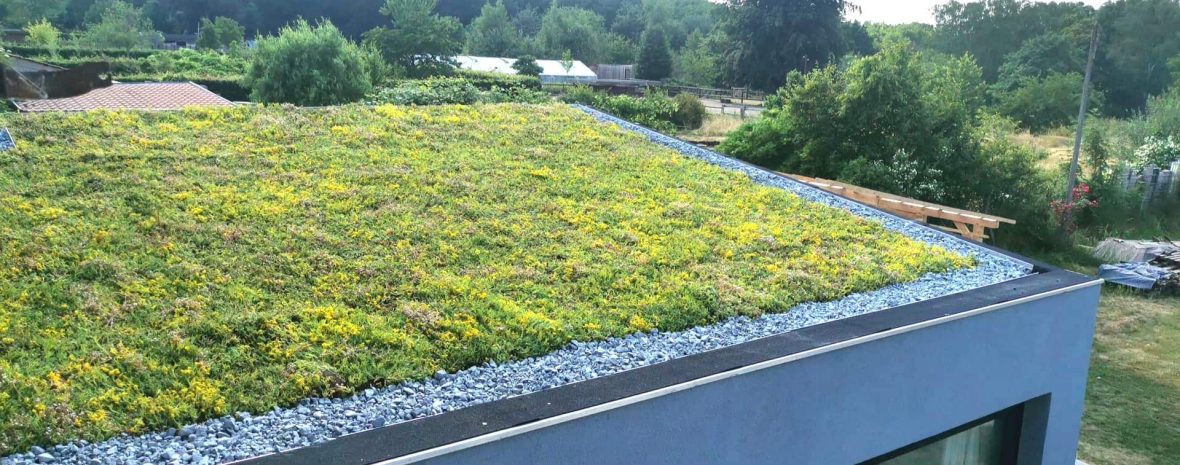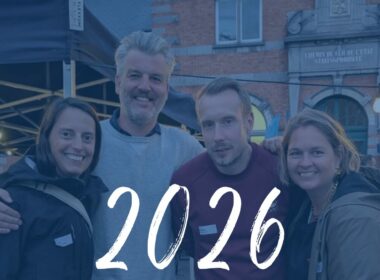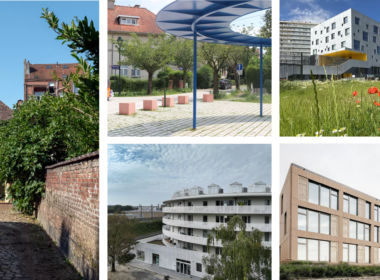Although they’ve been around for hundreds or even thousands of years in some parts of the world, green roofs are still gaining ground among the general public. Many people still hold negative beliefs about this. This undermines the reputation of the installation, which actually has numerous advantages.
And yet despite this, green roof projects are flourishing in both rural and urban areas. The benefits are numerous, both in terms of improving the value of the building and the living comfort of its occupants. The timing is perfect, as it is estimated that 70% of the world’s population will be living in cities by 2025. Numerous architects and developers have incorporated green roofs into their practices to improve the environment and quality of life.
Are green roofs unaffordable? Is it so difficult to plant them? Are the benefits really so remarkable?
Careful thought and scrupulous implementation are obviously essential. NIT 229 and the FLL standards are the basis for impeccable implementation. Green roofing is closely linked to stability and waterproofing. This needs regular checking, and in some cases, restoration, as in the case of building renovation. For example, you can test the watertightness of a flat annex roof with a bitumen coating. Tests are carried out by accredited professionals, such as water and smoke tests. As for the stability of the building, a stability engineer will be able to give an opinion on the load allowed on the roof. The vegetation on a green roof and the substrate (the soil on which the plants grow) soak up water when it rains. This means the roof acts like a sponge. Its mass increases and water flows are modified in a variable return time. The buffer effect is invaluable in the overall fight against flooding.
Green roofs are classified according to their appearance, use (terrace, car park, photovoltaic panels, etc.) and the type of vegetation. We can also distinguish between the number of layers that make up the roof: anti-root protection membranes and felts, drainage membranes and perimeter gravel, modular water retention systems, substrates adapted to the type of vegetation (lava stones, gravel, pozzolana, etc.), vegetation adapted to the type of green roof (perennial, annual, grass, bulbs, shrubs and even medium-sized trees). For example, if you’re interested in this type of project as a private individual, you can choose between two different types of green roofs.
A thin green roof, with a maximum total thickness of 13 cm, is known as an “extensive” roof. It is subject to the 6% state tax rate and is characterised by sedum-like vegetation with herbaceous, moss, lichen and aromatic plants. These are relatively light green roofs, since it is possible to cover a flat roof with loads from 55-60 kg/m² depending on the materials used. Heavier systems can weigh up to a hundred kilos per m². A semi-intensive or intensive flat-garden green roof is made up of thicker substrates and more diverse vegetation, such as ornamental and vegetable gardens, shrubs and trees. Intensive green roofs carry a much higher load, with a minimum of 150 kg/m² and up to 400 kg/² or more.
Green roofing provides a wide range of solutions for both materials and plants. Each project should be studied on a case-by-case basis, depending on the intended use of the roof. It is important to design the project on the basis of technical constraints such as stability, waterproofing and runoff, which are analysed upstream. Then, of course, the type of plant (and substrate) also depends on the expected result, whether it’s a vegetable garden in tubs with drip irrigation or a terrace with extensive planting of perennials, annuals and sedums with a rest area.
NIT 229 defines light garden roofs as green roofs covered with low-intensity vegetation. The plants are then characterised by turf and certain slow-growing ornamental plants with adapted root systems. It is important to note that certain plants should be avoided (see NIT 229 list), such as black locust and willow, because their powerful roots can damage the roof’s waterproofing.
Just as with a garden, factors such as orientation and wind have to be taken into account. Sedums don’t grow so well on NORTH-facing roofs or in the shadow of buildings. Mosses grow in abundance under ideal conditions. Maintenance and watering will also ensure a green, flowering roof. Watering should be meticulous and well targeted during heatwaves to save water. This can be done, for example, by hand on a ground-floor annex, using a garden hose or watering can, depending on access. A programmed disperser can also be installed on a sloping green roof facing SOUTH-SOUTHWEST and drying winds.
Green roofs have a dual effect on drainage in built-up areas: they reduce the total quantity of rainwater discharged, while at the same time reducing peak rainfall rates. More specifically, in a study carried out by Buildwise, the water retention role was highlighted in a study that compared several different types of green roofs, both bare and ballasted with gravel. Measured annual retention scores were of the order of 30% for the extensive roofs and 50% for the intensive roofs studied. Various different factors all have a bearing, such as substrate thickness, drainage types and the actual plants. Runoff water from a green roof is impacted because it passes through different layers of substrate and drainage, and runs off materials and the waterproofing membrane. Substrate and organic matter affect the colour of runoff water, making it yellow. We can also observe a decrease in acidity or an increase in PH.
Maintenance can be fairly straightforward for an extensive sedum green roof, but it should not be neglected. In most cases, it can be as simple as a daily or weekly visual inspection to detect any anomalies, such as a change in plant colour, which if ignored can lead to plants dying. By intervening at an early stage, we can avoid costly major renovations. Fertiliser should be applied twice a year, and if necessary, the roof should be weeded. It’s also a good time to check rain drains, gravel drainage areas and any possible piles of leaves or organic matter. Care should be taken during servicing and maintenance to comply with current safety standards. In some cases, the securing of technical personnel is mandatory via fixed safety systems.
A more comfortable home with a green roof? Just ask anyone who occupies a building with a green roof and you’ll hear all about the benefits in terms of improved living conditions. From an acoustic point of view, for example, noise is attenuated. From a thermal point of view, even if it doesn’t actually replace quality insulation installed in accordance with good practice, a green roof does help to reduce temperature variations.
Living comfort is improved. For example, a study was carried out on a green roof in Kassel, Germany (“Végétaliser son toit” Gernot Minke, ed. Terre Vivante), composed of dense herbaceous vegetation and wild grasses on a light 16 cm substrate.
Even though temperatures rise to 30°C during the day in summer, the temperature at the roof covering under the substrate layer did not exceed 17.5°C.
This is quite impressive, considering that a bituminous or black EPDM waterproofing coating can easily reach 60°C!
Similarly, in winter, when the outside temperature dropped to -14°C, the substrate temperature did not go under 0°C.
This reduction in temperature variations makes it easy to understand why green roofing provides protection against the ageing of waterproofing membranes, which are damaged by UV, infrared and temperature variations. So greening a roof increases its lifespan.
Improved quality of life goes hand in hand with a built-up environment featuring a large number of green roofs. Plants stimulate the well-being of residents and occupants thanks to their aesthetic appeal and their production of flowers and edible fruit and vegetables. They embellish the neighbourhood and the city, and enhance biodiversity. They reduce the urban heat island effect through cooling, and support the water cycle by reducing runoff and through evapotranspiration. They also play their part in air quality, since plants purify the air by sequestering CO2 while producing oxygen, and capture fine particles and dust.
If you still have concerns about the risks associated with green roofs, the risk of fire is greatly reduced or even non-existent if FLL standards are met in implementation. Substrate thicknesses of at least 3 cm are used, with a maximum composition of 20% organic matter for a substrate thickness of 10 cm.
Whether in an urban or rural setting, enjoying the benefits of a green roof is a real pleasure for users, especially at a time when the climate is making summers torrid with prolonged droughts and frequently suffocating temperatures. These periods of heatwave will recur in the future, and green roofs will help us to cope better with these changes.
When enjoying a meal with friends on a green roof, you can breathe in the fresh air in a delightful setting that encourages relaxation and serenity.
Author: Violette PENASSE – VESTACULTURE
Read also: Making buildings more energy-efficient and environmentally friendly cannot be improvised; Low tech as a way to mitigate the hidden environmental impact of buildings; Wood construction, a pillar of Europe’s Green Deal; Designing future renovations; Collaborate with Hautes Écoles researchers from the SynHERA network to bring your innovation projects to life





